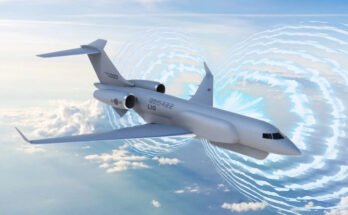by Derek Bisaccio, Military Markets Analyst, Forecast International.
Russia is moving forward with export plans for two of its Admiral Grigorovich class frigates (Project 11356M). Under an agreement inked last year, Moscow will export the Admiral Butakov and Admiral Istomin to India, and assist India in producing two more locally. While both sides seem to be working on implementing the contract, Western sanctions have created complications.
Initially, the Russian Navy intended to put six frigates of the class into service with the Black Sea Fleet. The Black Sea Fleet had commissioned the first two last year (lead ship Admiral Grigorovich and Admiral Essen) and is likely to commission the third, Admiral Makarov, in 2017. However, the collapse of military cooperation between Ukraine and Russia has left the remaining three without their intended Ukrainian-made gas turbine engines.[i]
In order to power these three – as well as other upcoming vessels reliant on Ukrainian engines – Russia will need to produce its own gas turbine engines. However, two of the ships are already under construction. And, rather than wait until a Russian-made alternative gas turbine engine could become available, Russia has hinted at exporting the frigates, with an option for a foreign customer to acquire the original engines from Ukraine.
In March 2016, the Vice President of United Shipbuilding Corporation (USC), Igor Ponomaryov, confirmed to TASS News Agency that the firm entered talks with India regarding a potential sale.[ii] He indicated that while the state order was still proceeding, “negotiations are under way” for the sale of three frigates. USC subsidiary Yantar Shipyard is responsible for producing them.
Through the course of negotiations, the two sides slightly amended the deal. An agreement was reached in mid-October 2016 for Russia to export two frigates to India and assist in the local production of two more – likely at Goa Shipyard. The deal, part of several military contracts worth billions of dollars,[iii] followed a meeting between Russian President Vladimir Putin and Indian Prime Minister Narendra Modi.
Later that month, Indian Defense Minister Manohar Parrikar confirmed that Ukraine would provide gas turbine engines for the frigates,[iv] meaning that the ships would finally get their Ukrainian propulsion systems.
However, a report in The Economic Times in March 2017 cast some concern over the frigate deal’s fate,[v] particularly regarding the planned local production. The report pointed out that, “per Indian rules, all foreign vendors of defence equipment need to furnish guarantees from designated Indian banks before bidding for any project.” And, this would be an issue in an Indian bank’s dealing with USC, which is subject to U.S. Specially Designated Nationals (SDN) sanctions.
The Economic Times quoted an official as saying, “No Indian bank can deal with any entity on the SDN list, as this will get them into major trouble with the U.S. As international transactions involve trade in dollars, no bank can afford to be noncompliant with the sanctions list.” Citing unnamed officials, the report noted that the Indian government could amend procurement rules to offer Russian entities a special exemption from having to secure a bank guarantee.
The deal appears to be moving forward. The Times of India reported on March 7, 2017, that two Russian delegations have visited India to inspect Goa Shipyard and determine if it is capable of handling the frigate production.[vi] Goa Shipyard Ltd Chairman Shekhar Mital told The Times of India that the Russian delegations “checked our infrastructure and R&D facilities. They looked around the facility and our audits and they seem impressed.”
The Indian Ambassador to Russia, meanwhile, has pushed back on the reports that sanctions will prevent the frigate contract from being completed. In an interview with Russian state-owned media Sputnik, Ambassador Pankaj Saran said, “We will continue to implement all the agreements that we have signed with Russia,” including the frigate deal.[vii]
The local production aspect of the frigate agreement “is a very complex project which involves several vendors,” according to defense sources speaking to Sputnik.[viii] The news agency noted the project requires approval from the Indian Cabinet Committee on Security. While seemingly not blocking the agreement, the element of Western sanctions adds another wrinkle to an already complicated effort.
Please feel free to use this content with Forecast International and analyst attributions, along with a link to the article. Contact Ray Peterson at +1 (203) 426-0800 or via email at ray.peterson@forecast1.com for additional analysis.
The Forecast International International Military Markets series examines the military capabilities, equipment requirements, and force structures inventories of 140 countries, with corresponding coverage of the political and economic trends shaping the defense market outlook for individual countries and regions.
[i] Sam LaGrone, “Russian Navy Faces Surface Modernization Delays without Ukrainian Engines, Officials Pledge to Sue,” USNI News, June 10, 2015. http://news.usni.org/2015/06/10/russian-navy-faces-surface-modernization-delays-without-ukrainian-engines-officials-pledge-to-sue
[ii] TASS News Agency, “Russia in Talks with India to Sell Three Project 11356 Frigates,” March 11, 2016. http://tass.com/defense/861603
[iii] RFERL, “Russia, India Sign Defense Deals Worth Billions,” October 15, 2016. http://www.rferl.org/a/putin-indias-modi-to-sign-new-defense-energy-deals-brics-summit-goa/28054436.html
[iv] Naval Today, “Ukraine Agrees to Provide Engines for Indian Frigates Built in Russia,” October 26, 2016. http://navaltoday.com/2016/10/26/ukraine-to-provide-engines-for-indian-frigates-built-in-russia/
[v] Manu Pubby, “India’s Plans to Buy Strategic Russian Weapons Are in Jeopardy. Here’s Why,” The Economic Times, March 2, 2017. http://economictimes.indiatimes.com/news/defence/indias-plans-to-buy-strategic-russian-weapons-are-in-jeopardy-heres-why/articleshow/57419668.cms
[vi] Newton Sequeira, “GSL Eyes Guided Missile Frigate Deal,” The Times of India, March 7, 2017. http://timesofindia.indiatimes.com/city/goa/gsl-eyes-guided-missile-frigate-deal/articleshow/57503484.cms
[vii] Sputnik International, “US Sanctions to Have No Effect on Russia-India Defense Deals – Indian Ambassador,” March 7, 2017. http://sputniknews.com/military/201703071051340619-us-india-russia-s400/
[viii] Sputnik International, “Commercial Negotiations Gather Speed for $4 Billion Indo-Russia Frigate Deal,” March 7, 2017, http://sputniknews.com/military/201703071051329544-krivak-frigate-deal-russia-india/
For 50 years, Forecast International intelligence reports have been the aerospace and defense industry standard for accurate research, analysis, and projections. Our experienced analysts compile, evaluate, and present accurate data for decision makers. FI's market research reports offer concise analysis of individual programs and identify market opportunities. Each report includes a program overview, detailed statistics, recent developments and a competitive analysis, culminating in production forecasts spanning 10 or 15 years. Let our market intelligence reports be a key part of reducing uncertainties and mastering your specific market and its growth potential. Find out more at www.forecastinternational.com



